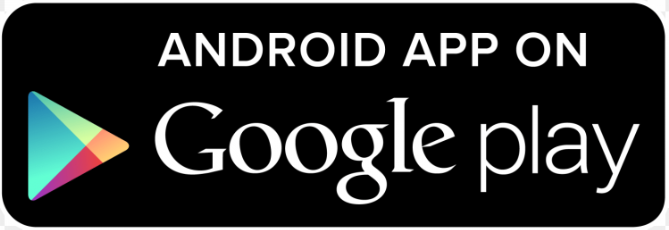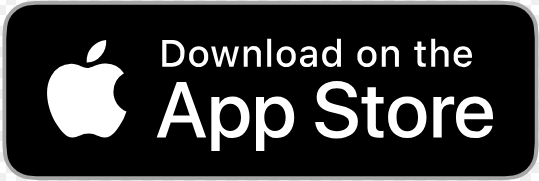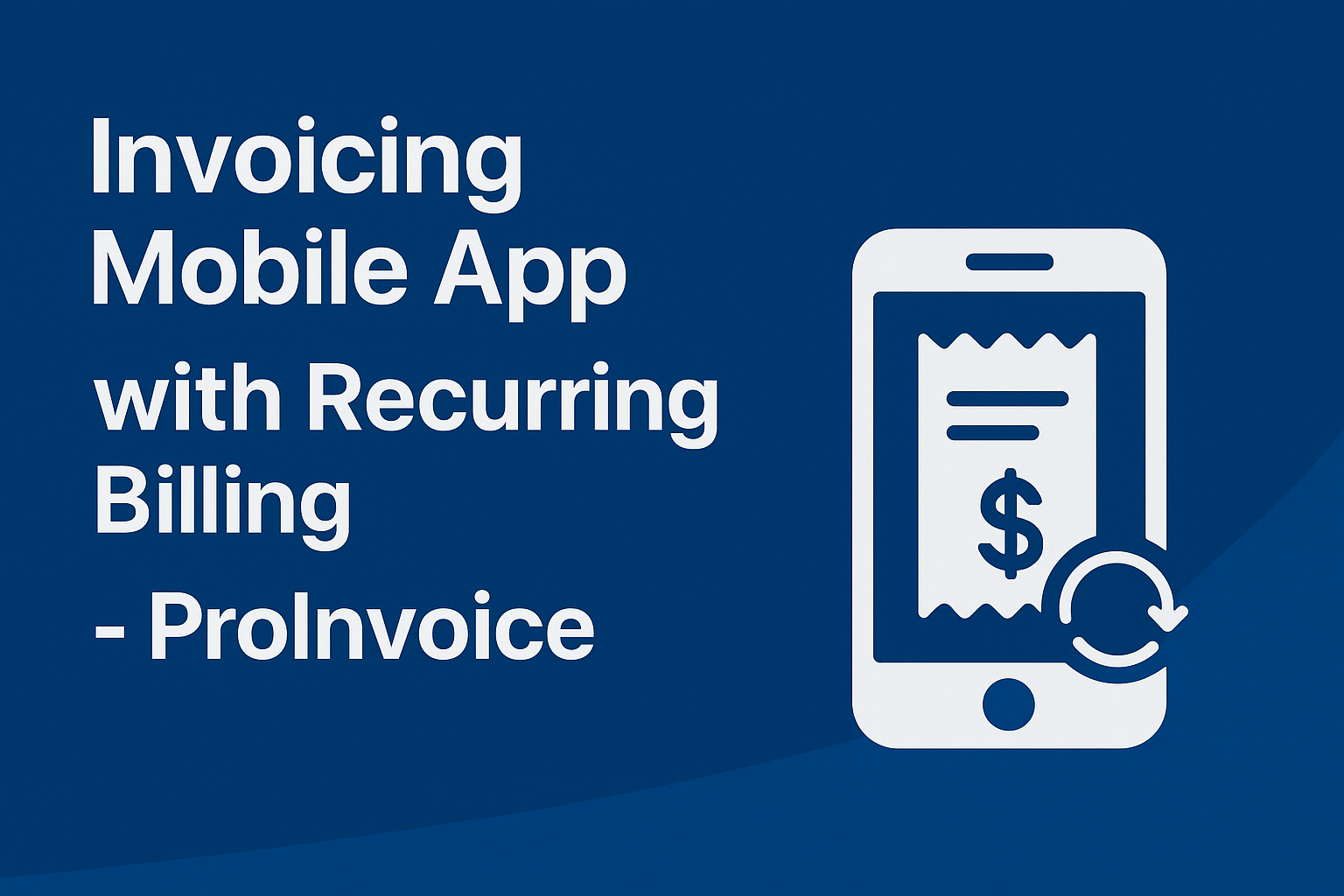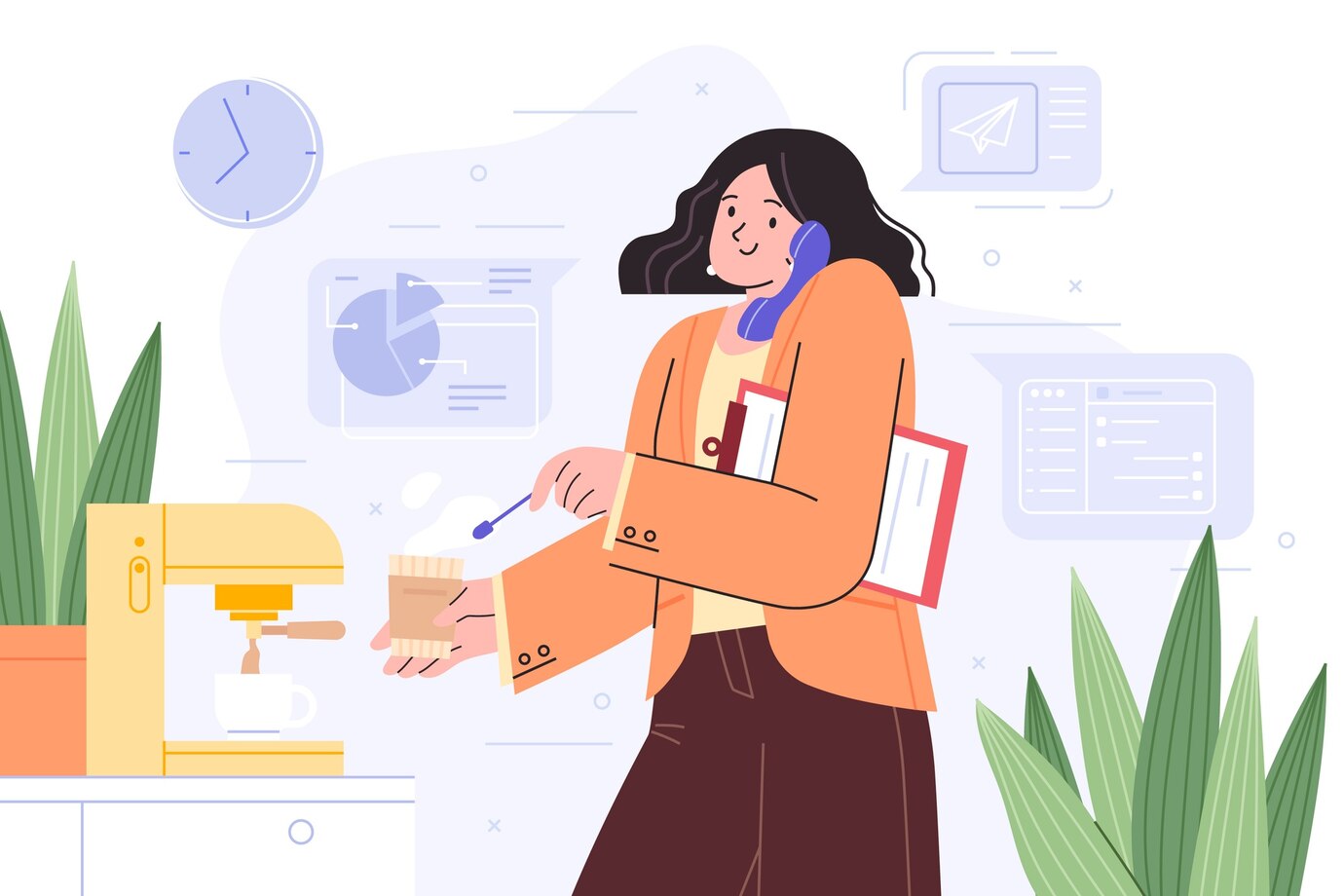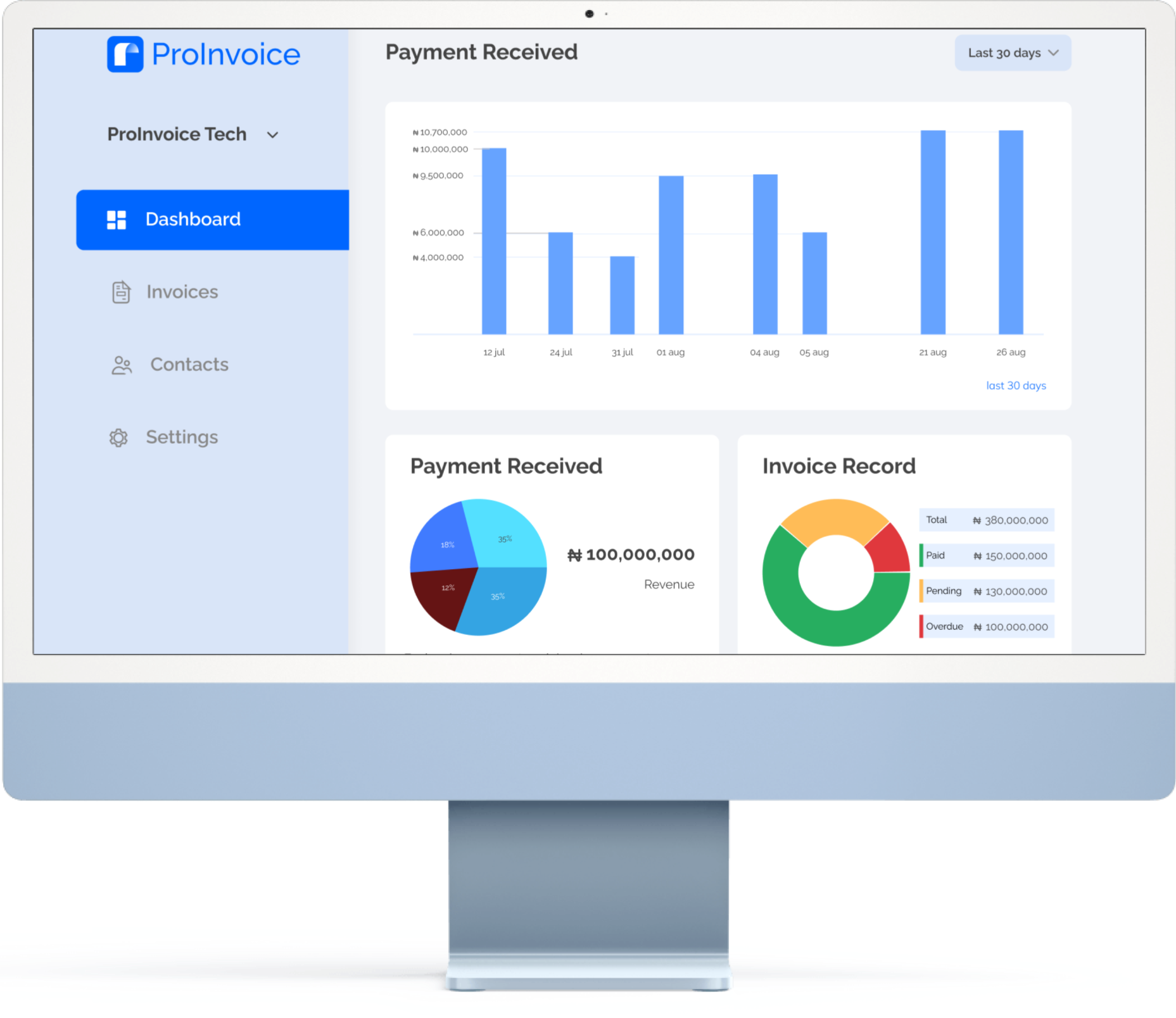How to Make an Invoice as a Freelancer – USA: Freelancing offers unparalleled freedom and flexibility, but with that independence comes the responsibility of managing your own business operations—including invoicing. More than 36% of America’s workforce now operates as freelancers, yet many struggle with creating professional invoices that ensure timely payment. Understanding how to craft effective invoices represents a crucial skill for any American freelancer seeking financial stability and professional credibility.
Stay organized as you grow. Use ProInvoice to manage billing and client relationships with ease.
Creating proper invoices isn’t merely about requesting payment—it’s about establishing professionalism, maintaining accurate financial records, and protecting yourself during tax season. Whether you’re a graphic designer in Austin, a writer in New York, or a consultant in Los Angeles, mastering the art of invoicing transforms your freelance operation from amateur to professional.
Why Proper Invoicing Matters for Freelancers
Professional invoicing extends far beyond simply asking clients to pay you. Well-crafted invoices serve multiple critical functions that directly impact your business success and financial health.
Legal Protection and Documentation
Invoices create paper trails documenting your business transactions. Should disputes arise about project scope, payment terms, or service delivery, your invoices provide concrete evidence of agreed-upon arrangements. This documentation proves invaluable if you ever need to pursue legal action for unpaid work or defend yourself against unfounded complaints.
In the rare but panic-inducing event of a tax audit, properly detailed invoices answer many questions for authorities and help prove you’re running a legitimate freelance operation. Without clear, comprehensive invoices, explaining your income sources and business expenses becomes exponentially more difficult.
Professional Image Building
Your invoice often represents one of the final impressions you make on clients. A polished, professional invoice reinforces your credibility and expertise. Conversely, hastily assembled invoices with missing information or amateur formatting undermine the professional image you’ve worked to build through quality service delivery.
Clients—especially corporate clients—expect professional business practices. Companies with established accounting departments require specific invoice elements for processing payments. Failing to provide these details delays your payment and creates extra work for everyone involved.
Cash Flow Management
Invoicing discipline directly impacts your financial stability. Sending invoices promptly after completing work accelerates payment timelines. Clear payment terms reduce ambiguity about when clients should remit payment. Detailed service breakdowns minimize questions that delay payment processing.
Freelancers who maintain organized invoicing systems report better cash flow and fewer payment delays compared to those who invoice sporadically or unprofessionally. The time invested in proper invoicing pays dividends through faster, more reliable income.
Essential Components of a Freelance Invoice
Understanding what information your invoice must contain prevents payment delays and maintains professional standards. American freelancers should include these critical elements in every invoice.
Click to download the Proinvoice mobile app now to manage your invoices anytime, anywhere with ease!
Your Contact Information
Your invoice should include your name if self-employed (which can be your full legal name or a shortened version), company name (if applicable), address, phone number, and email. This information allows clients to reach you quickly if questions arise about your invoice or services.
Business name inclusion matters even for solo freelancers. Establishing a consistent business identity through your invoicing builds brand recognition and professionalism. Your address indicates where you conduct business—whether a home office or commercial space—and forms part of professional invoicing standards.
Consider adding your professional logo or headshot to personalize your invoice. This visual element helps clients remember you and distinguishes your invoices from generic templates. However, avoid excessive branding that clutters the document or distracts from essential payment information.
Client Details
Accurate client information ensures your invoice reaches the right person and gets processed efficiently. Include the client’s full name or business name, billing address, contact phone number, and email address. For corporate clients, note any specific department or individual responsible for processing payments.
Accurate client details demonstrate that you’re professional and pay attention to details, which reflects well on you as a freelancer. Moreover, correct information helps your invoice reach the appropriate person within large organizations, avoiding unnecessary payment delays caused by misdirected paperwork.
If your client provided a purchase order (PO) number, include it prominently on your invoice. Many companies require PO numbers for payment approval, especially larger businesses with formal procurement processes. Missing this simple detail can stall payment indefinitely.
Invoice Number and Date
Every invoice requires a unique identification number and the date it was issued. A simple numbering system can help you and your client stay organized when tracking payments. You might use sequential numbers (001, 002, 003) or develop a system incorporating the year and client code (2025-CLIENTA-001).
Consistent numbering systems facilitate record-keeping for both you and your clients. When discussing specific invoices, referring to unique invoice numbers eliminates confusion. These numbers also help you track which invoices remain unpaid and identify patterns in client payment behavior.
Click to download the Proinvoice mobile app now to manage your invoices anytime, anywhere with ease!
The invoice date matters for multiple reasons. It establishes when the payment period begins, helps differentiate between invoices if numbering issues occur, and provides essential information for tax record-keeping. Ensure this date reflects when you actually send the invoice, not when you completed the work.
Detailed Service Description
Providing a clear description of the work you completed ensures you receive proper compensation for your time and effort, including the dates the work was done and the specific tasks performed. If you’re a freelance writer, list article titles or blog post topics along with completion dates. Graphic designers should specify design projects and deliverables with corresponding dates.
Break down complex projects into distinct line items showing individual services or phases. This transparency helps clients understand exactly what they’re paying for, reducing questions and disputes. Each line item should include:
- Description of the service or deliverable
- Quantity or hours worked
- Rate per unit (hourly rate, per-word rate, project rate)
- Subtotal for that line item
Detailed breakdowns prove particularly important when billing corporate clients whose accounting departments need clear documentation for expense categorization. Vague descriptions like “consulting services” invite questions and delays, while specific descriptions like “Brand strategy consultation – 4 hours @ $150/hour” provide clear justification for charges.
Payment Terms and Due Date
Make the due date clear by specifying your agreed payment terms, like “Due upon receipt” or “Net 30 days”. This clarity sets expectations and provides clients with a specific timeline for payment. Common payment terms include:
- Due upon receipt: Payment expected immediately
- Net 15: Payment due 15 days from invoice date
- Net 30: Payment due 30 days from invoice date
- Net 60: Payment due 60 days from invoice date (typically for larger corporations)
Establish payment terms during project negotiation rather than springing them on clients through your invoice. Your invoice simply reiterates previously agreed-upon terms, ensuring everyone remains aligned on expectations.
Consider including late payment policies on your invoice. Clearly state any fees or interest charges that apply to overdue payments. While you hope never to enforce these penalties, having them clearly documented provides leverage if clients delay payment unreasonably.
Stay organized as you grow. Use ProInvoice to manage billing and client relationships with ease.
Total Amount Due
Display the total amount owed prominently on your invoice. The total should include any applicable taxes, and if a discount has been applied this should be reflected in the final total. Break down the calculation clearly:
- Subtotal of all services
- Any discounts applied (with explanation)
- Applicable taxes (sales tax, VAT, etc.)
- Final total due
Make this figure impossible to miss—use larger font, bold text, or visual highlighting to ensure clients immediately see the amount owed. Ambiguity about the total invites payment delays while clients seek clarification.
Payment Methods
Include in-depth instructions and a link to your preferred payment service to make things easier for your clients. Modern freelancers should offer multiple payment options accommodating different client preferences:
- Bank transfers/ACH (provide routing and account numbers)
- Credit/debit cards (through payment processors)
- PayPal or Venmo (include your account email)
- Checks (provide mailing address)
- Digital payment platforms specific to your industry
The more payment options you offer, the fewer obstacles clients face when remitting payment. Some clients prefer credit cards for tracking purposes, while others favor bank transfers to avoid processing fees. Flexibility in payment acceptance translates directly into faster payment collection.
Using a professional invoicing platform like ProInvoice’s free invoice generator streamlines this process by automatically incorporating payment links and options directly into your invoices, making it effortless for clients to pay immediately upon receipt. You can also register for a full account to access advanced features like automated payment reminders and comprehensive invoice tracking.
Also Read: Reduce Invoicing Subscription Costs by 70% – ProInvoice
Understanding Tax Requirements for US Freelancers
American freelancers face specific tax obligations that impact how they create and maintain invoices. Understanding these requirements protects you from compliance issues while ensuring accurate income reporting.
Sales Tax Considerations
Include the total charge and itemize any applicable sales tax if required by your state. Sales tax requirements vary significantly across states and even within municipalities. Some states exempt services from sales tax, while others require it. Research your state’s specific requirements or consult with a tax professional to ensure compliance.
When sales tax applies, clearly separate it from your service charges on invoices. Show the subtotal, tax rate applied, tax amount, and total. This transparency helps clients understand charges while providing clear documentation for your tax records.
Form 1099-NEC and Record Keeping
Clients paying freelancers over $600 for services in a calendar year must issue Form 1099-NEC (Nonemployee Compensation). While you don’t need to include tax forms with your invoices, maintaining accurate invoice records ensures you can reconcile 1099 forms received against your actual income.
Freelancers must report their self-employment income using Schedule C (Profit or Loss from Business) on Form 1040. Your invoices serve as primary documentation supporting the income you report. Organized, detailed invoices make tax preparation straightforward rather than a nightmare of reconstructing your annual earnings.
Click to download the Proinvoice mobile app now to manage your invoices anytime, anywhere with ease!
Record Retention Requirements
File copies of all invoices for at least three years to remain audit-ready. Digital storage makes maintaining these records simple—use cloud-based invoicing software that automatically archives all invoices indefinitely. Should questions arise about income from previous years, you’ll have immediate access to supporting documentation.
Choosing Your Invoicing Method
Freelancers have several options for creating and sending invoices. Each approach offers different advantages depending on your business size, technical comfort, and budget.
Manual Invoicing
Creating a new invoice from scratch manually every time you need one is probably the cheapest way to do it, since free invoicing software like Canva and Google Docs can be used. This approach works for brand-new freelancers handling very few clients, but comes with significant drawbacks.
Manual invoicing costs the most in terms of time and energy. Each invoice requires rebuilding formatting, re-entering client information, and recalculating totals. The repetitive nature of this work quickly becomes tedious, and manual data entry increases error risk. One transposed number or forgotten tax calculation can cause payment delays or professional embarrassment.
For freelancers just starting out who literally cannot afford paid software, manual invoicing represents a temporary solution. However, transition to more efficient methods as soon as financially feasible—the time saved quickly justifies any modest software costs.
Spreadsheet-Based Systems
Excel or Google Sheets templates offer a middle ground between fully manual invoicing and dedicated software. Templates preserve formatting and formulas, reducing manual work while maintaining flexibility. You can customize templates extensively to match your brand and specific invoicing needs.
While these are simple programs, they require lots of manual entry which can lead to errors and missing information. Additionally, spreadsheet programs don’t automatically update with new tax rates or invoicing requirements—you must track these changes yourself and update templates accordingly.
Spreadsheet-based systems work reasonably well for freelancers with consistent pricing structures and a limited number of clients. However, as your business grows and invoicing becomes more complex, spreadsheet limitations become increasingly frustrating.
Professional Invoicing Software
Dedicated invoicing platforms provide the most efficient, professional approach to freelance billing. Modern invoicing software automates repetitive tasks, reduces error risk, and presents a polished professional image to clients.
Quality platforms like ProInvoice offer comprehensive features specifically designed for freelancer needs. Create invoices in minutes using saved client information and service catalogs. Automatic calculations ensure accuracy. Professional templates maintain consistent branding. Payment tracking shows exactly which invoices remain outstanding.
Many freelancers resist invoicing software, perceiving it as an unnecessary expense. However, the time saved—often several hours monthly—usually justifies the investment many times over. Consider the opportunity cost: would you rather spend three hours monthly creating manual invoices or invest that time in billable client work?
ProInvoice’s mobile app adds another layer of convenience, allowing you to create and send invoices immediately after completing work, regardless of location. This immediacy accelerates your billing cycle and improves cash flow.
Best Practices for Freelance Invoicing
Beyond including required elements, following best practices separates amateur freelancers from seasoned professionals.
Stay organized as you grow. Use ProInvoice to manage billing and client relationships with ease.
Send Invoices Promptly
Create and send invoices immediately after completing work while project details remain fresh in everyone’s minds. Delays between service completion and invoice delivery increase the likelihood of client payment delays. Prompt invoicing signals professionalism and demonstrates that you take your business seriously.
Consider this psychology: clients receiving invoices within 24 hours of service completion rarely question charges and typically process payments quickly. Wait a week or two, and clients may have forgotten details, developed budget concerns for the period, or simply deprioritized your payment among other obligations.
Be Clear and Specific
Vagueness invites questions, which invite delays. Instead of “consulting services,” specify “Brand positioning strategy consultation – 6 hours.” Rather than “writing project,” detail “Product description copywriting – 10 pages, 500 words each.” Specificity demonstrates professionalism while reducing ambiguity about what clients are paying for.
This clarity proves especially important when working with corporate clients whose accounting departments process hundreds of invoices. Clear descriptions help processors categorize expenses correctly without contacting you for clarification, speeding payment approval.
Maintain Consistent Numbering and Dating
Develop an invoice numbering system and stick to it religiously. Sequential numbering works perfectly—start at 001 and increment with each invoice. More complex systems incorporating year, client codes, or project identifiers work equally well if you maintain consistency.
Never skip numbers or use the same number twice. Your numbering system creates an audit trail showing all invoices issued throughout your freelance career. Gaps or duplicates raise questions about your record-keeping practices and potentially about whether you’re reporting all income for tax purposes.
Follow Up Professionally
Send friendly payment reminders as due dates approach. Sometimes your invoice might have been forgotten or missed, so a friendly message is a good way to nudge them in the right direction. Most clients appreciate reminders and pay promptly once reminded—few deliberately avoid payment.
Professional invoicing platforms automate this process, sending reminders on schedules you configure without requiring your direct involvement. This automation maintains client relationships while ensuring you receive timely payments without awkward personal follow-ups.
Keep Detailed Records
Maintain organized records of all invoices sent, payments received, and outstanding balances. This organization serves multiple purposes: tracking your actual income, identifying slow-paying clients who may require different terms, and simplifying tax preparation.
Cloud-based invoicing systems automatically maintain these records, providing instant access to your complete invoicing history. Reports showing income trends, client payment patterns, and outstanding receivables inform business decisions while demonstrating professional financial management.
Common Freelance Invoicing Mistakes to Avoid
Even experienced freelancers sometimes make invoicing errors that delay payment or create professional problems. Avoid these common pitfalls.
Incomplete Contact Information
Missing phone numbers, incorrect email addresses, or outdated business names create unnecessary barriers between you and your payment. Verify all contact information—both yours and your client’s—before sending each invoice. This simple verification prevents payment delays caused by invoices reaching wrong recipients or clients being unable to contact you with questions.
Vague Service Descriptions
Generic descriptions like “services rendered” or “project work” provide no clarity about what clients are paying for. Always specify exactly what you delivered, when you delivered it, and how you calculated charges. This specificity protects you if disputes arise while demonstrating professionalism to clients.
Missing Payment Terms
Forgetting to specify when payment is due leaves clients guessing about your expectations. Some may assume Net 30, others Net 60, and some may simply deprioritize your invoice indefinitely. Explicitly stating payment terms eliminates this ambiguity and provides a concrete deadline for clients to work toward.
Calculation Errors
Mathematical mistakes undermine your professional credibility and can delay payment while corrections are made. Double-check all calculations before sending invoices, or better yet, use invoicing software that automatically performs calculations accurately every time.
Inconsistent Branding
Using different templates, formats, or branding elements across invoices creates confusion and appears unprofessional. Establish a consistent invoice design and use it for all clients. This consistency reinforces your brand identity while creating a polished, professional appearance.
Streamlining Your Invoicing Process
Efficiency in invoicing frees time for revenue-generating work while ensuring you maintain consistent billing practices. Implementing these strategies transforms invoicing from a dreaded chore into a quick, routine task.
Create Client Profiles
Save client information in your invoicing system to avoid re-entering details for repeat clients. Most professional platforms allow storing unlimited client profiles including billing addresses, payment terms, preferred payment methods, and notes about specific invoicing requirements. This one-time data entry saves minutes on every subsequent invoice.
Build Service Catalogs
If you offer standard services at consistent rates, create a service catalog listing common offerings with descriptions and pricing. Select services from this catalog when building invoices rather than typing descriptions and prices repeatedly. This approach ensures consistency while dramatically speeding invoice creation.
Use Templates
Develop invoice templates for different project types or clients. Templates preserve formatting, calculate totals automatically, and maintain your professional branding. You simply fill in project-specific details rather than creating each invoice from scratch.
Automate Recurring Invoices
For clients you bill regularly—retainer arrangements, subscription services, or ongoing maintenance—set up automatic recurring invoices. The system generates and sends invoices on your specified schedule without requiring manual work. This automation ensures consistent billing while eliminating the risk of forgotten invoices.
Leverage Mobile Capabilities
Modern invoicing shouldn’t require returning to your office computer. Mobile invoicing apps allow creating and sending professional invoices from your smartphone or tablet, wherever work takes you. Invoice clients immediately after completing on-site work while details remain fresh and client satisfaction peaks.
Getting Started with Professional Invoicing
Transitioning to professional invoicing practices requires minimal time investment but delivers substantial returns through faster payments and reduced administrative work.
Choose the Right Tool
Evaluate your specific needs when selecting invoicing software. Consider factors like the number of invoices you send monthly, whether you need expense tracking, how many clients you manage, and whether you require team collaboration features.
Many platforms offer free tiers providing essential features at no cost. ProInvoice, for example, allows unlimited invoicing through its free plan, making professional invoicing accessible regardless of budget. Register takes just minutes, and you can immediately begin creating professional invoices.
Set Up Your Profile
Complete your business profile thoroughly, including all contact information, payment details, and branding elements like your logo. This initial setup ensures every invoice you create includes complete, accurate information without requiring repeated entry.
Configure Your First Template
Create an invoice template matching your preferred style and including all elements you want on every invoice. Customize colors, fonts, and layouts to reflect your brand identity. Save this template as your default so future invoices automatically use your established formatting.
Build Your Client List
Enter information for your current clients into the system. While this initial data entry requires some time, you’ll immediately benefit on your next invoice to each client as their information auto-populates. Over time, this saved information represents hundreds of hours recovered from manual data entry.
Create Your First Invoice
Generate your first invoice using the platform. You’ll likely find the process takes under five minutes once your profile and client information are configured. Send the invoice directly from the platform, and begin tracking its payment status through built-in monitoring tools.
Maximizing Your Freelance Success Through Better Invoicing
Professional invoicing represents far more than an administrative requirement—it’s a critical component of freelance business success. Clear, detailed invoices ensure timely payment while demonstrating the professionalism that attracts quality clients and commands premium rates.
American freelancers operating in today’s competitive marketplace cannot afford amateur invoicing practices. Clients expect professional business operations, and your invoices represent a visible expression of your business maturity. Investing time in developing strong invoicing practices pays dividends throughout your freelance career through improved cash flow, reduced payment friction, and enhanced professional reputation.
Whether you’re just launching your freelance career or looking to professionalize your established practice, implementing proper invoicing systems transforms this administrative necessity into a strategic business advantage. The time you invest today in developing efficient, professional invoicing practices will be recovered many times over through the years ahead.
Stay organized as you grow. Use ProInvoice to manage billing and client relationships with ease.


